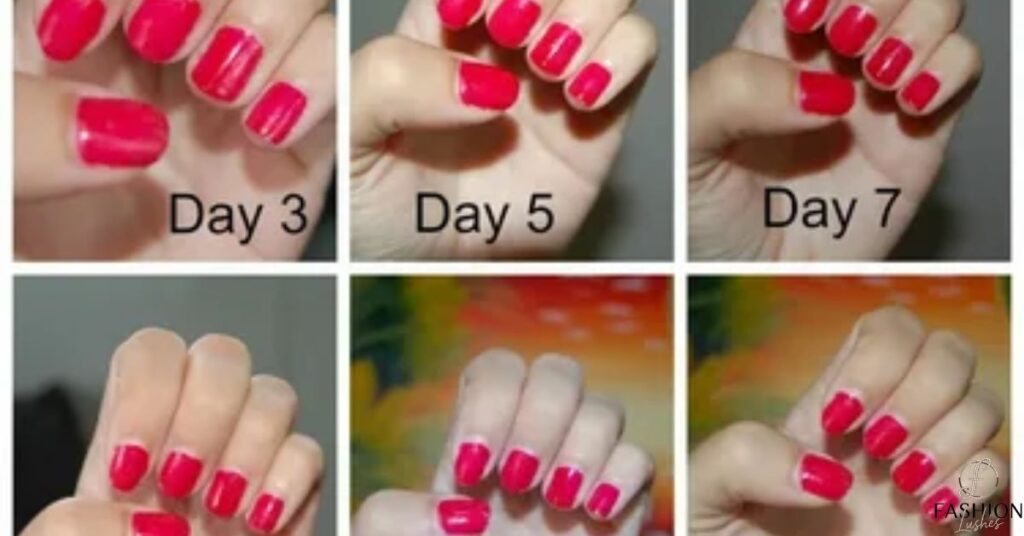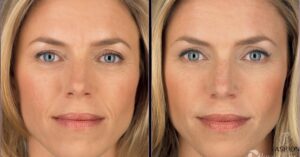Nail fashion trends may change over time. Shellac nails seem to have found a spot, in the spotlight. These resilient and enduring manicures have become a sensation, in the beauty industry. What sets them apart? Their ease of use and ability to last make them a top pick.
Shellac manicures provide a finish to gel nails but without causing harm to your natural nails. The UV cured polish ensures lasting wear that resists chipping for weeks giving you peace of mind, about smudging post manicure. Many women appreciate the convenience and ease of upkeep that shellac offers as the color remains flawless during activities such, as work and household chores.
Shellac manicures provide a finish to gel nails but without causing harm. The UV cured polish remains free of chips, for weeks eliminating concerns, about ruining your nails post manicure. Many busy women appreciate the hassle nature of shellac as the color stays flawless despite tasks and responsibilities.
What Is a Gel Manicure?
A shellac manicure involves applying a nail polish known as Shellac and then curing it using UV lamps until it hardens.

This process of curing is what gives shellac its shiny appearance. The outcome resembles that of a gel manicure; however shellac employs its patented polish and method.
Side Effects of a Gel Manicure
Over time gel manicures may have effects. The potent gel nail polishes can result in fragile nails. Excessive use of gel can also cause nail peeling and weakness.

These side effects happen because gel manicures require sturdy polishes. The polishes get hardened under UV lights. This drying process can be rough on nails with frequent gel use.
Side Effects of a Shellac Manicure
Shellac manicures can also lead to dryness and weakness. Similar, to gel manicures shellac involves using a polish that hardens, under UV lights potentially exposing nails to risks of harm.
However, shellac is marketed as being a bit gentler than gel on nails. The shellac brand claims their polish is more flexible and breathable. But it can still lead to issues with overuse.
How to Choose Between a Gel and Shellac Manicure

When choosing between gel or shellac consider what matters most to you. If durability is key gel might offer wear. However keep in mind that gel can be tougher, on your nails.
Shellac is the pricier option but promises more nail flexibility. It aims for a middle ground between regular polish and intense gels. Neither is totally risk-free though – take breaks.
What Are Shellac Nails?
Shellac manicures involve the application of Shellac nail polish and a curing process using UV lamps to achieve an long lasting finish.
his branded technique gives shellac its tough yet flexible reputation. Shellac nails promise to be tougher than regular manicures. But not as potentially damaging as some gel polishes.
Shellac Nails vs. Gel Nails
Shellac and gel nails are both types of manicures that are known for their lasting qualities. Shellac involves the use of a branded polish and a unique curing method while gel nail polish is available, from a variety of brands. Both types require curing under UV lamps to set and strengthen the polish.

This gives the nails a tough, shiny finish. Shellac is marketed as more flexible and breathable than gel. But gel may potentially last a bit longer once applied.
Read This Blog: Everything You Need to Know About Foilyage, Explained
Application Method
To get shellac nails the nail surface is prepared. Dehydrated initially. The shellac polish is then applied in layers. After each layer the nails are cured for a minutes, under a UV lamp.
To create gel nails the tips of the nails are. Then treated with a dehydrating solution. A base coat of gel is. Cured before applying gel polish coats, which are then cured under a UV lamp.
Nail Damage
Both shellac and gel nail treatments require the polish to be cured under UV lamps. This exposure, to UV light has the potential to dehydrate and harm nails with visits. Among the two gel manicures are generally considered abrasive, on nails.

Using them excessively can result in brittleness, peeling and cracking. While Shellac is promoted as a milder alternative it also has its drawbacks. It’s advisable to take breaks between getting either treatment to give your nails time to recuperate.
Risks and Safety
UV lamps utilized for drying shellac and gel manicures carry health hazards. Prolonged exposure, to UV radiation may elevate the chances of developing skin cancer and experiencing aging. Applying sunscreen on your hands can assist in reducing these risks.
Improper application and removal of shellac gels can also damage the nail beds. Overusing these services without breaks may compound these risks as well.
Removal Method
To remove shellac or gel nail polish you soak your nails in acetone. This helps dissolve the hardened polish so it can be carefully scraped off. Since acetone can be drying it’s important to apply oil.

Picking at the polish should be avoided to prevent nail damage. Salons have specialized methods to soak and remove gels shellac safely. Improper removal by peeling or prying can severely harm nails.
Gel Nails: Everything You Need To Know
Gel nails are a form of nails made with gel polish, which is cured and solidified under UV lamps resulting in an long lasting appearance.
Gel manicures can be done on nails or nail tips. They offer a realistic appearance compared to acrylic nails. However gel manicures still need preparation and time to set. They are a choice, for those looking for a durable and lasting manicure option.
Also Read This Blog: Eyebrow Threading 101: Everything You Should Know About the Hair Removal Process
How are gel nails applied?
To start the nails are prepared by pushing back the cuticles and drying out the nail surface. Then a base coat of gel is put on. Set under a UV lamp.
The colored gel polish goes on next in thin coats. Each coat gets cured separately under the UV light. A topcoat is applied last and cured for the finished look.
How long do gel nails last?

With proper application and home care, gel nails can last 2-3 weeks chip-free. They don’t require any drying time like regular polish.
But the nails will eventually start growing out from the cuticles. Touch-ups can extend the manicure’s lifespan a bit longer. Getting gels refreshed or removed every 3 weeks is recommended.
Acrylic Nails: Everything You Need To Know
Artificial nails made of acrylic are crafted using a blend of powder and monomers. This mixture is brushed onto nail tips or forms to extend the nails. Acrylic nails result in an long lasting surface.
They are more rigid and less flexible than gel nails. Acrylics also require more extensive prep and application. But they’re a long-lasting option for nail enhancements.
How are acrylic nails applied?
First the nail surface is. Dehydrated to improve adhesion. Then a nail tip or form is attached to the nails followed by the application of layers of mixture, over it.
Between coats, the nails are shaped and air-dried. Once formed, the acrylics get buffed to the desired nail shape. The process takes precision and practice.
How long do acrylic nails last?
Typically acrylic nails that are properly done tend to stay looking good for about 2 to 3 weeks before they require a touch up or removal. While acrylic nails are quite sturdy you might notice some growth, near the cuticles as time goes on.
Getting touch-ups as needed can extend their lifespan up to a month. But too much filling can weaken and damage the acrylics over time. Removal and reapplication is recommended.
Gel Nails vs. Acrylic: What’s the Difference?

Both gel nails and acrylic nails are nail enhancements that last longer. However they have some differences. Gel nails require curing gel polish onto your nails under UV lights while acrylic nails involve using a monomer and powder to create artificial nail extensions.
Gel manicures usually give off a sleeker and appearance providing a natural look. On the hand acrylic nails result in an sturdier surface sometimes looking less natural. Gels offer flexibility whereas acrylics are known for their rigidity. In general gel nails emulate the style of a salon manicure whereas acrylics are used for creating nail enhancements.
Appearance and finish
Gel nails have a glossy but more natural-looking finish when applied correctly. Acrylics have a thicker, harder surface that can look more artificial. Gels conform to the natural nail’s shape better too. Acrylics create extensions or fuller nail enhancements.
Health and safety

Both gel and acrylic nails come with safety concerns when used over a period. Gel nails exposure, to UV light, which could potentially harm the skin. On the hand acrylic nails involve chemicals that might result in nail fragility or trigger allergic responses in certain individuals. It is crucial to apply and remove both types of nails correctly to mitigate any risks associated with them.
Frequently Asked Question
Which lasts longer – gel or acrylic nails?
Acrylic nails typically last a bit longer usually lasting, between 3 to 4 weeks when maintained with fill ins.
Are gel nails healthier than acrylics?
Gels may be a bit gentler as they’re more flexible, but both involve potential risks.
What’s easier to remove – gel or acrylic?
Removing gel polish is less laborious, than having to file down acrylic nail enhancements.
Can you get gel nails if you have short nails?
Sure you can easily use gel polish on your nails without needing extensions.
Do gel nails look thicker than acrylics?
Gel nails offer a sleeker and natural appearance in contrast, to the acrylic enhancements.
Are gel nails completely odor-free?
Gel polish doesn’t have any smell unlike the odor of acrylic monomers.
Which is more affordable – gel or acrylic manicures?
Gel manicures are usually the option compared to the other service.
Conclusion
Both gel and acrylic nails come with their benefits, for individuals seeking nail enhancements. Gel nails provide an natural appearance by curing gel polish, on the nails. Additionally they are more pliable. Do not have any odor like acrylics do.
Acrylic nails provide a bolder and striking look by utilizing a combination of monomer and powder to create thicker nail enhancements. While they offer durability and longer wear they may appear bulkier. Additionally acrylics preparation of the nails strength and skillful application, during the process.
When choosing between gel or acrylic, consider your priorities. Gels are lower maintenance and mimic a salon manicure. Acrylics sculpt artificial extensions for added length and design options. Both pose some health risks with UV exposure and harsh ingredients. Taking breaks is recommended with either to protect your natural nails.











